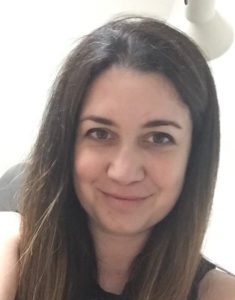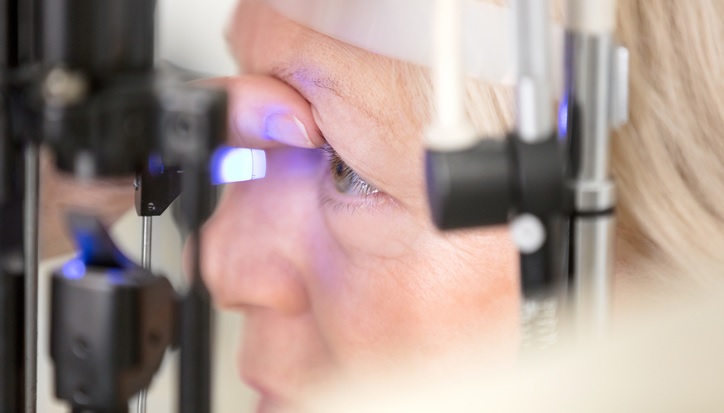By Carla Gasparini, OD

August 1, 2018
The Hispanic population across the U.S. is growing rapidly. There are currently an estimated 55 million Hispanic people in the United States, comprising over 17 percent of the population, according to the 2016 U.S. Census.
By 2060, the Census Bureau projects that Hispanic people will comprise over 28 percent of the total population, with 119 million residing here.
My 13-year-old practice, which operates independently within a Walmart in Austin, Texas, has found a niche in serving this growing population. Austin is about 34 percent Hispanic, with about 24 percent of those people speaking Spanish as a first language. I see 2-3 Spanish-speaking patients per day at my office, which is located in the lower- to middle-income neighborhood of South Manchaca.
The Hispanic patients I see are a mix of new and first-generation immigrants, who moved to our area lured by a surge in construction and service-industry jobs.
Address Common Eye Health Needs: Diabetic Eye Disease and Astigmatism
Annual comprehensive exams account for two-thirds of visits by my Hispanic patients. I also see many Hispanic patients to be fitted for toric contact lenses, as I have found astigmatism to be prevalent in the Hispanic community, along with diabetic eye disease and construction-related ocular injuries. The average revenue-per-visit for my Hispanic patients is $125-$188.
The incidence of diabetes is higher for Hispanics, with rates of diabetic awareness far lower than in other socio-economic groups. Education on adequate glycemic control, diet and exercise seems far lacking. High-cylinder astigmatism is very common, so I try to keep an array of > -2.75 cylinder contacts diagnostic trials in stock especially for fitting these patients.
I also diagnose a fair amount of glaucoma in Hispanic patients. These patients, who are mostly younger, seem to have larger physiological cup size, and that is certainly a risk factor as they age. I’ve read that the incidence of glaucoma in Hispanics is similar to African-Americans (The Los Angeles Latino Eye Study), and this is an issue that will increase as the Latino population grows.
Editor’s Note: Click HERE to read “Ethnic Differences in Optic Nerve Head Topography.”
Expect to Be a First Point of Care
I am often my Hispanic patients’ first point of contact for healthcare, and take time to counsel them on getting screened for possible systemic conditions like diabetes. It’s always good to have business cards of other MDs, or local health clinics, to facilitate continuation of care.
Since most people will come to ODs seeking help for their eyesight, you can use the approach that the eyes are a window into the overall health of that individual. Discussion of preventative care before major problems arise can be a challenge in a population that might distrust doctors.
Offer Bilingual Staff
I was lucky to have grown up in a multicultural family, with a Puerto Rican mother and an Ecuadorian father, who both spoke Spanish at home.
In addition to myself, half of my office staff speaks both English and Spanish, and are able to translate for doctors who are not native Spanish speakers. I do not need a translator, but I always strive to have at least one Spanish-speaking assistant/tech at my front desk.
Accommodate Scheduling Needs
I’m open 6-7 days per week, but the majority of my Spanish-speaking patients come after school (4 p.m.) with their children weekdays, or on the weekends.
Expect Families to Accompany Patients
Hispanic families travel in groups comprising two to three generations. Don’t be surprised if, as you are examining the child (patient), the grandmother walks into the room to join the parent of the child. I have at least two chairs in each room for families to share. Exams can, and will be, a multi-generational discussion.
Market to the Hispanic Community
When I first arrived in Austin, I advertised in print media (Spanish newspapers, called diarios, such as El Mundo in Central Texas). I offered a coupon to get patients in the door. From that initial investment of $700, I was able to increase the word-of-mouth advertising that is common in immigrant communities.
Getting in contact with your local Hispanic Chamber of Commerce also helps bring an exposure of your practice to Hispanic community leaders that can pay dividends in the future. Small-business memberships range from $200-800 yearly depending on your company size.
Performing vision screenings at schools leads to greater exposure to the practice. I have found that by leaving practice brochures in Spanish with school nurses we increase our visibility within the community. Churches and community centers are also good sources of referrals.
Create Spanish-Language Patient Educational Materials
I’ve made my own Spanish-language brochures about diabetic retinopathy, glaucoma, refractive errors and cataracts, using the online printing service, Vistaprint. The cost was less than $75 for 100 brochures.
I also have reached out to vendors like Transitions Optical to receive multicultural eye-exam information sheets.
In addition, I have a page that has been translated in Spanish attached to my web site that gives our hours of operations, info about the practice etc.
Optimize Educational Resources for Yourself
The American Optometric Association has a guide on “Communicating with Spanish Speaking Patients” that covers Spanish catchphrases that are useful in optometric offices. Another good resource: “Spanish Terminology for the Eyecare Team” by Brian Chou, OD.
 Carla Gavilanes Gasparini, OD, is the owner of Capital Eye Care & Hill Country Eye Care in Austin, Texas. To reach her: gaspariniod@gmail.com
Carla Gavilanes Gasparini, OD, is the owner of Capital Eye Care & Hill Country Eye Care in Austin, Texas. To reach her: gaspariniod@gmail.com


























